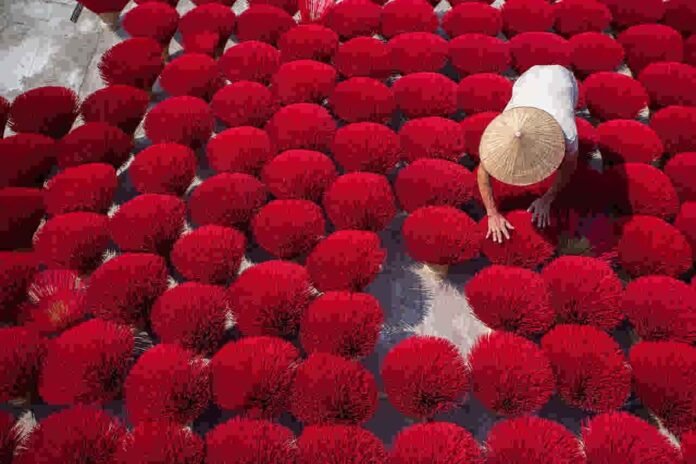Levapioli every generation inherits something from the one before it. Sometimes it’s land or property, sometimes it’s stories and songs, and very often it’s traditions that carry meaning far beyond their surface. One such tradition is Levapioli. Now, if you’re wondering, what is Leva and why should I care?, you’re not alone. To many outside its circle, Levapioli may sound mysterious. But to those who know, it is a living expression of culture, heritage, and creativity.
Levapioli is fascinating because it’s not a rigid, one-size-fits-all concept. Instead, it thrives through variations—different forms, designs, and uses that keep it alive and relevant. These variations are more than just stylistic choices. They reflect history, family stories, celebrations, and even the creativity of ordinary people who put their own spin on tradition.
Why Levapioli Matters
Every tradition matters for a reason, and Levapioli is no exception. In fact, its importance is layered—just like Levapioli itself.
1. It Preserves Culture
Levapioli carries the weight of generations. Through it, people hold on to the customs, styles, and rituals of their ancestors. Without practices like Leva, so many cultural stories would simply fade away.
2. It Inspires Creativity
Unlike rigid traditions that must stay the same, Levapioli encourages variation. That makes it an outlet for creativity. Each family, each region, and each generation adds something new, which keeps it fresh while still being rooted in history.
3. It Creates Emotional Bonds
Ask anyone about Levapioli and they’ll likely tie it to a memory: maybe sitting with their grandmother, maybe a festive season, maybe the joy of making or receiving it. These emotional connections are powerful—they transform Leva from “just a thing” into a meaningful experience.
So yes, Levapioli matters. It matters to heritage, to art, and to the human heart.
The Beauty of Its Variations
Imagine a tree: strong roots anchoring it, a trunk giving it form, and then countless branches reaching outward in different directions. That’s exactly how Levapioli works. Its roots are cultural and historical, but its branches are the variations—some small, some grand, some modern, some ancient.
The beauty of Levapioli lies in these variations:
- They allow the practice to adapt to change while keeping its essence.
- They show the ingenuity of people who use what they have to create something new.
- They keep Leva inclusive, letting everyone participate in their own way.
This adaptability is why Levapioli hasn’t been lost to history. Instead, it continues to thrive, evolve, and inspire new generations.
What is Levapioli?
This blog will take you on a detailed journey through Levapioli. We’ll uncover its origins, explore the beauty of its variations, see why it matters so much to communities, and discover how it’s still evolving in today’s modern, globalized world.
So, whether you’ve come across Leva in family gatherings, festivals, online posts, or you’re just curious about cultural treasures, this guide will help you appreciate its richness in ways you may not have expected.
To fully appreciate its variations, we need to step back and understand what Leva itself represents.
Origins and Meaning
The term “Levapioli” comes from old roots—“leva,” meaning to lift, and “pioli,” suggesting a layer or fold. Together, they describe something that is lifted or layered beautifully, often crafted with care.
Historically, Leva was more than a physical creation—it was a ritual act. Communities used it to mark seasons, to honor guests, or to celebrate milestones. It symbolized prosperity, respect, and togetherness.
How It Evolved Over Time
At first, Levapioli was simple and functional, tied tightly to tradition. Over centuries, however, it absorbed new influences. Trade routes, migration, and cross-cultural encounters introduced new techniques, materials, and styles.
Today, Leva exists in countless forms: some that stay true to the original, and others that are bold reimaginings for a modern world.
Types of Levapioli Variations
Levapioli isn’t one thing—it’s a whole family of practices. Let’s explore the main types of variations.
1. The Classic Form
The classic Levapioli is treasured for its authenticity. It uses the original techniques, follows old methods, and is often handmade by elders who carry the knowledge. This form is usually seen during rituals and festivals, where staying close to tradition matters most.
2. Modern Twists
Modern Leva is where creativity runs wild. Younger generations experiment with new designs, colors, and even tech-driven methods. While purists sometimes resist these twists, they’re crucial for keeping Leva alive in today’s fast-paced world.
Examples include:
- Simplified versions for busy lifestyles.
- Contemporary designs that appeal to younger audiences.
- Fusion styles that mix Leva with global trends.
3. Regional Styles
Levapioli looks different depending on where you are. Some regions prefer bold colors, others keep it minimal. Some are intricate and time-consuming, while others value simplicity. These regional variations reflect not only culture but also geography and local resources.
4. Festive and Ceremonial Uses
Levapioli shines brightest in celebrations. Weddings, harvest festivals, and seasonal rituals often feature special ceremonial versions, made with extra care and grandeur. These variations elevate events, giving them beauty and meaning.
Why Variations Matter
Now, why does it matter that Levapioli comes in so many forms? Because without variation, traditions risk fading away.
Cultural and Family Traditions
Each variation is a signature of identity. Families hand down their own style of Leva, making it something deeply personal. Over time, these unique approaches become part of family pride.
Heritage and Innovation
Levapioli variations represent the perfect balance between heritage and innovation. They honor the past while embracing the future. This is what keeps them alive in changing times.
Emotional Connections
When someone sees a Leva variation they grew up with, it instantly transports them back to a moment—a childhood memory, a festival, a grandparent’s home. This emotional tie is what gives variations their deep power.
Making and Experiencing Levapioli
Levapioli isn’t just about looking at it—it’s about making and experiencing it.
Key Elements and Techniques
Traditional Leva often involves careful layering, detailed folding, and patient crafting. These techniques require skill and often years of practice.
Creativity and Uniqueness
No two Levapioli are ever exactly the same. Each maker leaves behind their creative fingerprint, whether in design, shape, or arrangement. This uniqueness makes every Leva special.
Tips to Enjoy Authentically
- Seek both traditional and modern styles to see the full spectrum.
- Try making one yourself—you’ll appreciate the craftsmanship more deeply.
- Ask about the story behind a variation; context makes it richer.
- Share the experience with others, as Levapioli is meant to bring people together.
Levapioli in Today’s World
Far from being outdated, Levapioli is thriving in the modern age.
Media and Social Platforms
Social media has brought Leva into the global spotlight. Videos, tutorials, and artistic showcases help spread it far and wide. Younger creators are putting their spin on it, making Leva trend-worthy.
Global Influence
Once limited to specific regions, Leva is now enjoyed worldwide. It appears in international festivals, exhibitions, and even cross-cultural collaborations.
Technology’s Role
Technology has revolutionized Levapioli:
- Online workshops help people learn from anywhere.
- Digital design tools allow for creative innovation.
- Virtual showcases keep traditions alive in diaspora communities.
Stories Around Levapioli
Levapioli is more than a craft—it’s surrounded by stories.
Myths and Folklore
In old tales, Levapioli was believed to bring prosperity and protect households. Some myths described it as a charm against negativity, especially when made with care.
Real-Life Inspirations
Beyond myths, real families tie Leva to milestones. For some, it’s part of weddings; for others, it’s a festive centerpiece. Artists and writers even use Leva as inspiration, seeing it as a metaphor for resilience and creativity.
The Future of Levapioli
What does tomorrow hold for Levapioli?
New Trends
We’re seeing exciting fusions: digital Leva designs, fashion adaptations, and even eco-friendly versions made from sustainable materials. These trends ensure Leva stays relevant to younger generations.
Globalization and Change
As Levapioli spreads globally, it will inevitably change. Some traditions may be lost, but new interpretations will emerge. This is part of its evolution—change keeps it alive.
Conclusion
Levapioli is not just a tradition—it’s a living story of creativity, heritage, and connection. Its many variations prove that culture can evolve while still holding on to its roots. From classic forms to bold modern twists, from regional styles to festive masterpieces, Levapioli reflects humanity itself: ever-changing, deeply meaningful, and beautifully diverse.
In a world moving faster than ever, Leva reminds us of something vital: tradition doesn’t have to stay frozen in time. It can grow, adapt, and continue to inspire.
So the next time you see or experience Levapioli, pause and appreciate it. Behind every fold, every variation, and every story lies a piece of human history—and perhaps even a piece of your own.

